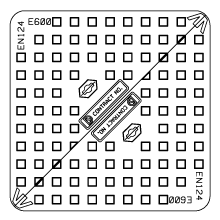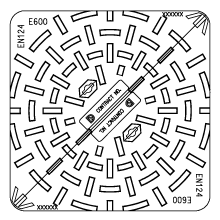History
The birth of manhole is closely linked to the development of Hong Kong. In the early days, the design of combined sewage and drainage channel was simple, they only relied on rainwater to wash away the excretion. The channels/ditches were not covered and it was easy to spread bacteria. In 1894, a plague in Hong Kong prompted the Government to speed up the implementation of sewage reforms, including the separation of the original combined sewer system into two independent ones and covering channels/ditches. From then on, the water supply, sewerage and stormwater pipelines were transferred to the underground. Later, stone and stoneware were replaced by cast iron to build more durable pipes and manhole covers.
"Round-clean-Square-dirty"


At present, there are two types of manhole cover patterns commonly found in Hong Kong. The small squares indicate sewer manholes while the round pattern indicates stormwater manholes. Therefore, there is a simple term "Round-clean-Square-dirty". The design of manhole covers should be easily identified by the maintenance team.
Mysterious symbol
Text symbols on manhole covers are like their ID card, which could provide important information of the manhole, such as loading, relevant project works, etc.
- "H","M","L"
These show the loading capacity of the manhole covers. ‘H’ is Heavy duty (Heavy) meaning it can bear heavy trucks driving on it; M is Medium duty (intermediate) indicating it can be passed by ordinary vehicles; L is Light duty (light) which is suitable for general footpath. - “DC” means the contract of the DSD(Drainage Contract), the code is usually following by the manufactured year and the contract no..
In addition, some of the manhole covers are marked with relevant design standards, as well as the project number. For example: "EN124" is an EU standard certification. It is the standard for standardizing the quality, type, and passing tests of manhole covers.
Design feature
- Shape
Part of the square manhole covers (pictured above) is formed by two triangles to relieve the physical load on workers of the maintenance team. - Concave surface
The surface of the canal must be embossed to enhance its slip resistance. - "Eyes" on the canal
There are two round slots on the cover, just like two eyes, which are the key holes allowing workers to insert special tools to pull up the covers.

